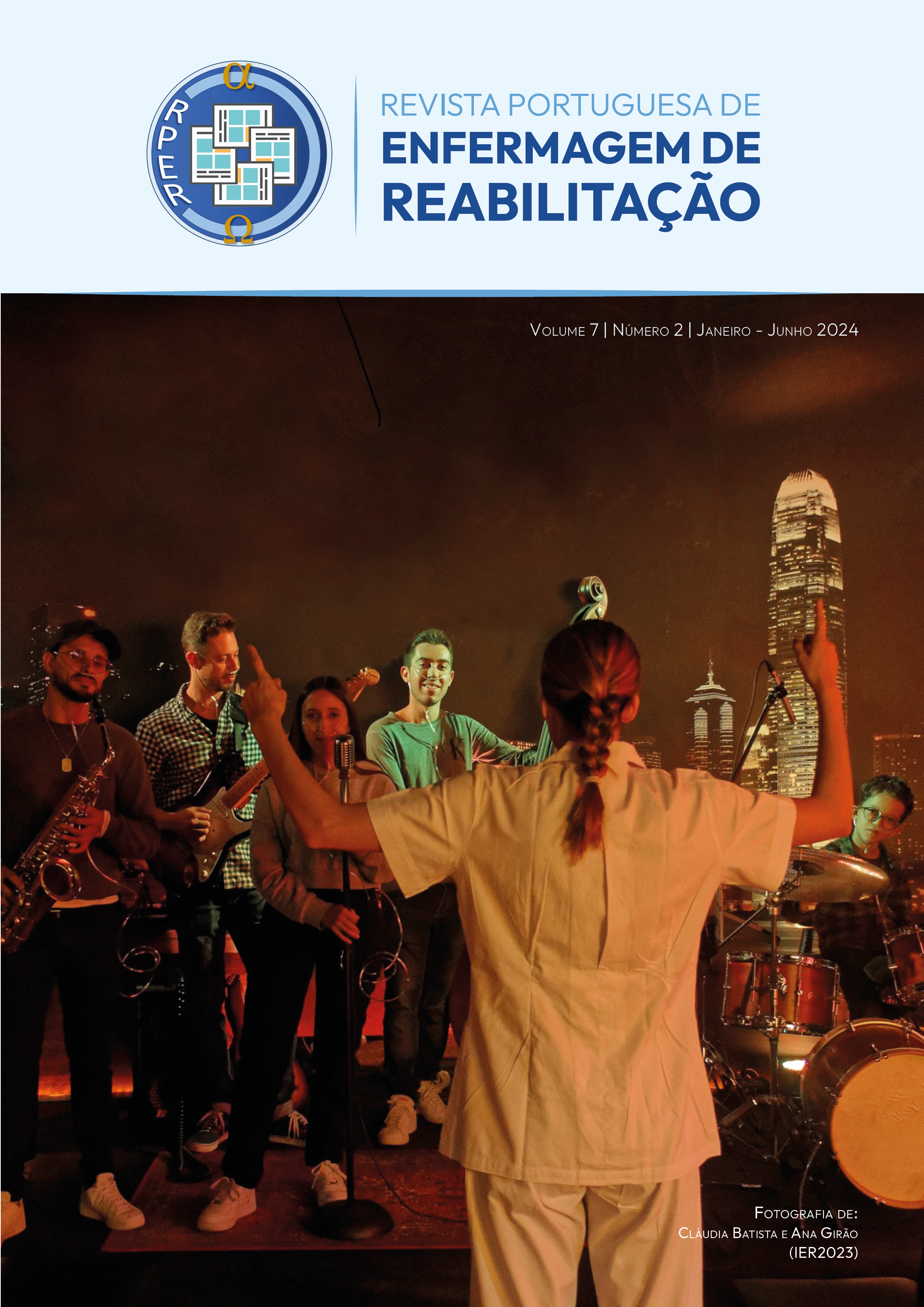Abstract
Introduction: The complications associated with long term hospitalizations in ICU’s and have an extremely negative impact on functional capacity and quality of life of critical patients. It is crucial to use an adequate instrument, which allows measuring/assessing the limitations and the evolution of functional capacity in critical patients during their hospitalization.
Objectives: To translate and validate the Chelsea Critical Care Physical Assessment (CPAx) (Corner et al., 2013, 2014) to Portuguese language.
Methodology: Translation, cultural adjustment and psychometric analysis study of the Chelsea Critical Care Physical Assessment (CPAx) instrument to assess the functional capacity of critical patients in Portuguese ICUs.
Results/Discussion: The Portuguese version CPAx scale, showed excellent agreement and reliability for the domains evaluated .
Conclusion: The scale showed good psychometric properties. Based on the values ??obtained, it is considered that the CPAx is validated for the Portuguese population.
References
Amaral AF, Ferreira PL. Adaptation and validation of the clinical nursing expertise survey to the Portuguese nursing population. Escola Anna Nery - Revista de Enfermagem. 2014;18(3). doi:10.5935/1414-8145.20140070
Cordeiro, Carmo; Menoita, Elsa. Manual de Boas Práticas na Reabilitação Respiratória: Conceitos, Princípios e Técnicas. 2012, 1ª Edição. Loures: Lusociência. ISBN: 978-972-8930-86-8
Nikayin, Sina, et al. “Anxiety Symptoms in Survivors of Critical Illness: A Systematic Review and Meta-Analysis.” General Hospital Psychiatry, vol. 43, Nov. 2016, pp. 23–29, https://doi.org/10.1016/j.genhosppsych.2016.08.005.
Marra, Annachiara, et al. “The ABCDEF Bundle in Critical Care.” Critical Care Clinics, vol. 33, no. 2, Apr. 2017, pp. 225–243, www.ncbi.nlm.nih.gov/pmc/articles/PMC5351776/, https://doi.org/10.1016/j.ccc.2016.12.005.
Parry SM, Denehy L, Beach LJ, Berney S, Williamson HC, Granger CL. Functional outcomes in ICU – what should we be using? - an observational study. Critical Care. 2015;19(1). doi:10.1186/s13054-015-0829-5
Needham, Dale M., et al. “Core Outcome Measures for Clinical Research in Acute Respiratory Failure Survivors. An International Modified Delphi Consensus Study.” American Journal of Respiratory and Critical Care Medicine, vol. 196, no. 9, Nov. 2017, pp. 1122–1130, https://doi.org/10.1164/rccm.201702-0372oc.
Corner, Evelyn J, et al. “Construct Validity of the Chelsea Critical Care Physical Assessment Tool: An Observational Study of Recovery from Critical Illness.” Critical Care, vol. 18, no. 2, 2014, p. R55, https://doi.org/10.1186/cc13801.
Corner, E., Wood, H., Englebretsen, C., Thomas, A., Grant, R., Nikoletou, D., & Soni, N. (2013). The Chelsea Critical Care Physical Assessment Tool (CPAx): validation of an innovative new tool to measure physical morbidity in the general adult critical care population; an observational proof-of-concept pilot study. Physiotherapy, vol. 99, no.1 Mar. 2013, pp. 33-41, https://doi.org/10.1016/j.physio.2012.01.003
Beaton DE, Bombardier C, Guillemin F, Ferraz MB. Guidelines for the process of cross-cultural adaptation of self-report measures. Spine. 2000;25(24):3186–91. doi:10.1097/00007632-200012150-00014
Devlin, John W., et al. “Clinical Practice Guidelines for the Prevention and Management of Pain, Agitation/Sedation, Delirium, Immobility, and Sleep Disruption in Adult Patients in the ICU.” Critical Care Medicine, vol. 46, no. 9, Sept. 2018, pp. 825–873, journals.lww.com/ccmjournal/pages/articleviewer.aspx?year=2018&issue=09000&article=00029&type=Fulltext, https://doi.org/10.1097/ccm.0000000000003299.
Nydahl, Peter, et al. “Safety of Patient Mobilization and Rehabilitation in the Intensive Care Unit. Systematic Review with Meta-Analysis.” Annals of the American Thoracic Society, vol. 14, no. 5, May 2017, pp. 766–777, https://doi.org/10.1513/annalsats.201611-843sr.
Cameron S, Ball I, Cepinskas G, Choong K, Doherty TJ, Ellis CG, et al. Early mobilization in the Critical Care Unit: A review of Adult and pediatric literature. Journal of Critical Care. 2015;30(4):664–72. doi:10.1016/j.jcrc.2015.03.032
Mendez-Tellez PA, Needham DM. Early physical rehabilitation in the ICU and Ventilator Liberation. Respiratory Care. 2012;57(10):1663–9. doi:10.4187/respcare.01931
Hodgson CL, Stiller K, Needham DM, Tipping CJ, Harrold M, Baldwin CE, et al. Expert consensus and recommendations on safety criteria for active mobilization of mechanically ventilated critically ill adults. Critical Care. 2014;18(6). doi:10.1186/s13054-014-0658-y
Gosselink R, Bott J, Johnson M, Dean E, Nava S, Norrenberg M, et al. Physiotherapy for adult patients with critical illness: Recommendations of the European Respiratory Society and european society of intensive care medicine task force on physiotherapy for critically ill patients. Intensive Care Medicine. 2008;34(7):1188–99. doi:10.1007/s00134-008-1026-7
Green, Margot, et al. “Mobilization of Intensive Care Patients: A Multidisciplinary Practical Guide for Clinicians.” Journal of Multidisciplinary Healthcare, vol. 9, May 2016, p. 247, www.dovepress.com/mobilization-of-intensive-care-patients-a-multidisciplinary-practical--peer-reviewed-fulltext-article-JMDH, https://doi.org/10.2147/jmdh.s99811.
Denehy, Linda, et al. “A Physical Function Test for Use in the Intensive Care Unit: Validity, Responsiveness, and Predictive Utility of the Physical Function ICU Test (Scored).” Physical Therapy, vol. 93, no. 12, 1 Dec. 2013, pp. 1636–1645, academic.oup.com/ptj/article/93/12/1636/2735343, https://doi.org/10.2522/ptj.20120310.
Maher C, Latimer J, Costa L. The relevance of cross-cultural adaptation and Clinimetrics for physical therapy instruments. Revista Brasileira de Fisioterapia.2007;11(4). doi:10.1590/s1413-35552007000400002
Streiner D. Clinimetrics vs. Psychometrics: An unnecessary distinction. Journal of Clinical Epidemiology. 2003;56(12):1142–5. doi:10.1016/j.jclinepi.2003.08.011
Souza AC, Alexandre NM, Guirardello E de, Souza AC, Alexandre NM, Guirardello E de. Propriedades Psicométricas na Avaliação de instrumentos: Avaliação da Confiabilidade e da Validade. Epidemiologia e Serviços de Saúde. 2017;26(3):649–59. doi:10.5123/s1679-49742017000300022
Christakou, A., Papadopoulos, E., Patsaki, E., Sidiras, G., Nanas, S.N. Functional Assessment Scales in a general intensive care unit. A review. Hospital Chronicles., 2013, vol. 8, no. 4, pp. 164-70.

This work is licensed under a Creative Commons Attribution-NonCommercial-NoDerivatives 4.0 International License.
Copyright (c) 2024 Portuguese Rehabilitation Nursing Journal
Downloads
| Abstract Views | 932 |
|---|
| PDF (Português (Portugal)) | 681 |
|---|





